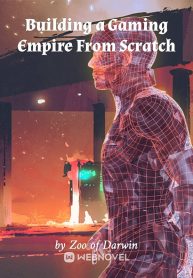The Rise Of Australasia - Chapter 351
- Home
- The Rise Of Australasia
- Chapter 351 - Chapter 351 Chapter 303 Inspecting the Stadium Construction Seeking Monthly Tickets
Chapter 351: Chapter 303: Inspecting the Stadium Construction (Seeking Monthly Tickets!)
Please continue reading on ΒOXΝʘVEL.ϹΟM .
In December 1911, due to the upcoming year of 1912, Arthur once again visited the National Stadium to inspect the construction of the stadium.
After two years of construction, the National Stadium had been built more than halfway, and now only some finishing touches remained.
During this time, the Australasian Olympic Preparatory Organization received applications from as many as 20 countries around the world to participate in the Olympic Games.
Compared to the previous London Olympics, the rules for this Olympic Games were slightly modified, with each country allowed to participate in up to seven people per event, and it was recommended to participate in three people.
At the same time, some more innovative technologies, such as electronic timing and finish line camera equipment, would also be added to this Olympic Games to make the timing of the Olympic Games more accurate and to better resolve some ranking disputes.
More importantly, because of the more accurate timing, which has been precise to a tenth of a second, and the large amount of funds Arthur invested, the International Olympic Committee has announced that they will record the performance of athletes at this Olympic Games and publish the corresponding world records.
That is to say, the outstanding performance of the Sydney Olympics will go straight into the world record.
This made athletes who wanted to bring glory to their country and gain fame for themselves even more eager for this Olympic Games, and it also made the Sydney Olympics widely discussed around the world.
The medals for this Olympic Games have also been prepared early, with gold medals made of gold and jade, and each medal is estimated to be worth at least 2,000 Australian dollars, which is truly valuable.
Don’t underestimate the value of these 2,000 Australian dollars. According to one pound being equal to 7.33 grams of gold, 2,000 are equal to 1,000 pounds, which is equal to 7,330 grams of gold.
If the value of this medal is estimated according to the later generations’ approximate gold price, it would even exceed 3 million yuan.
Of course, this is only based on the proportional calculation of the gold price. If factors such as currency depreciation are considered, this price may be even higher.
The silver medal’s price is slightly lower, with an estimated value of around 600 Australian dollars, which is just over a third of the gold medal’s value.
(vitag.Init = window.vitag.Init || []).push(function(){viAPItag.display(“vi_765923973”)})
As for the bronze medal of the third place, the estimated value is the lowest, about 150 Australian dollars, which can only be considered a decent participation award.
Of course, the number of events in the Sydney Olympics has also been reduced compared to the previous London Olympics.
According to negotiations with the International Olympic Committee, the Sydney Olympics will have only over 40 events, with the expected start time from June to July 1912, and it will take no more than two months to complete.
Arthur has spent a lot of money on this Olympic Games. In addition to building sports venues and organizing competitions, Australasia will also provide round-trip cruise tickets and accommodation expenses for all participating athletes and send professional medical teams to ensure the safety of all participating athletes’ lives.
However, these expenses are worth it. After all, the next Olympic Games are destined to be held a long time after this one.
Considering the current tense situation in Europe, Arthur even had to pray that the European situation would not worsen to ensure the smooth and successful holding of the Sydney Olympic Games.
It is worth mentioning that although only 20 countries have registered to participate in this Olympic Games so far, the number of registered athletes has exceeded 2,000, with 500 of them being from Australasia.
These 500 athletes were carefully selected by the previous athlete training team, and after a period of hard training, they should be able to achieve certain accomplishments.
In addition to the 500 people from Australasia, the country with the second-highest number of participants is Britain, with a total of 293 people. The third highest number is from Norway, with 207 people. The fourth-highest number is from Sweden, with 199 people.
After that, there are Finland with 186 people, Germany with 185 people, Russia Nation with 178 people, and the United States with 174 people, which are also countries with a relatively large number of participants in this Olympic Games.
Arthur’s goal is to strive for the number of participating countries in the Olympic Games to reach the threshold of 30 before the start of the Olympics.
At the same time, it would be best if the number of athletes participating in the Olympic Games could exceed 3,000, as hosting an Olympic Games is not easy, and the larger the scale, the better the effect naturally.
The construction of the stadium should be completed before March 1912, and there is no problem with it being put into use before the June Olympic Games.
As for the supporting hotels and various auxiliary buildings and roads for the stadium, they have been basically completed so far.
Only after visiting the hotel and training facilities prepared for the athletes, as well as the roads connecting the stadium and the urban city, did Arthur satisfactorily end his inspection tour of the stadium construction.
So far, the construction of the stadium has not only exhausted the initial 6 million Australian dollars budget, but also used an additional 2 million Australian dollars in reserve funds.
This resulted in a total construction cost of 8 million Australian dollars for the stadium, which is almost equivalent to the cost of four dreadnoughts.
However, considering the current construction of the stadium, Arthur believes that the money spent is worth it.
If the National Stadium can be used for several decades or even a hundred years, the historical and cultural heritage it represents is definitely more valuable than the millions of Australian dollars spent now.
After the inspection of the National Stadium, Arthur hurried to the Agricultural Machinery Factory without stopping.
This is where Arthur’s secret weapon is hidden, and it is also one of the weapons the Australasian Army will focus on equipping in the future.
“Your Majesty!” Outside the Agricultural Machinery Factory, Factory Manager Joel greeted Arthur respectfully and then took him to the warehouse of the factory.
Several newly produced tanks were parked in the warehouse, which were finalized after more than a year of testing and improvement since the last experiment and are the first-generation tanks.
Compared to the first test period, these new tanks have gained huge improvements in stability.
Although this does not change the occasional small problems of tanks, such as the occasional shedding of tracks, who cares about those small issues when you have a heavily armored and powerful weapon?
Looking at these brand-new tanks, Arthur nodded in satisfaction and asked Factory Manager Joel, “Manager Joel, what is the current production speed of the Agricultural Machinery Factory for these tanks?”
“Your Majesty, producing such a large weapon is not easy. If we can set up a production line, we can guarantee a production speed of one tank every four days. If we can set up two production lines, we should be able to increase the production speed to one every two to three days.” Factory Manager Joel answered.
Tank production includes armor, firearms, chassis, power systems, tracks, and other modules, and practicality and stability issues must be considered as well.
In addition, the testing stage each tank must go through adds to the production time, making the production of a tank not very fast, even if it is just an improvement on the tractor.
Arthur nodded in understanding and instructed, “Now, have the Agricultural Machinery Factory set up a tank production line and produce tanks at a rate of one every four days. The current production speed should be sufficient. I hope to have at least 200 tanks before 1914.”
Australasia is still far from large-scale warfare, and the role of tanks is not yet so high.
Then, Arthur turned his gaze to Factory Manager Joel, asking, “Manager Joel, can you design a transport vehicle with armor protection based on the current tanks and tractors to improve the efficiency of our army’s movement?”
“We can also mount large-caliber cannons on tractors, making it easier for the cannons to move and be mobilized. If these ideas can be realized, our arsenal may need to add a few more secret weapons.” Arthur said with a smile.
“It is possible, Your Majesty. It is not difficult to implement these ideas, but it will take some time to show their full potential in battle. Our factory is really understaffed, Your Majesty. Could you please send more outstanding employees and some military industry experts to help the Machinery Factory better realize these ideas?” While talking, Factory Manager Joel suddenly began to plead, looking helpless and sad.
“The Agricultural Machinery Factory is indeed under a lot of pressure while producing and researching tractors while also developing military weapons like tanks. We can do this, I will allow you to negotiate with military factories and invite some military industry experts to preside over the Agricultural Machinery Factory and better implement the ideas I proposed. As for the issue of outstanding workers, you can negotiate with the top technical schools in the country and have their graduates sent to the Agricultural Machinery Factory as a priority next year.” Arthur nodded, agreeing to Factory Manager Joel’s request.
Actually, it can’t be helped. After all, the production of tanks is still in a confidential state, which also means that military weapons like tanks can only be produced and researched under a factory focused on agricultural machinery like the Agricultural Machinery Factory.
Although the Agricultural Machinery Factory is quite large in scale, the simultaneous research and development of tractors and tanks does make them look understaffed in comparison.
“That’s great, thank you, Your Majesty. I will definitely pay attention to the weapon ideas you mentioned and strive to realize these ideas as soon as possible,” said Factory Manager Joel, delighted with Arthur’s consent.
“Don’t forget the development of the second-generation tank. The refitted tractor-based tank has limitations after all, and a new tank design is needed, which should be continuously improved and ultimately form the final tank system. Compared to the first-generation tank, I hope the second-generation tank can give me more surprises, and perhaps by then, it will be time for large-scale tank equipment,” Arthur instructed.
Development must always look forward. Although the Agricultural Machinery Factory successfully developed and manufactured the world’s first tank by retrofitting tractors, this success is only temporary and cannot be satisfied with just one tank based on the retrofit of tractors.
Arthur’s expectation for Australasian tanks is to have a good combat capability before World War I, develop at least a second-generation tank during the war, and to avoid losing their advantage in tank production due to leaks from the first-generation tank.













-1562-75x106.jpg)
